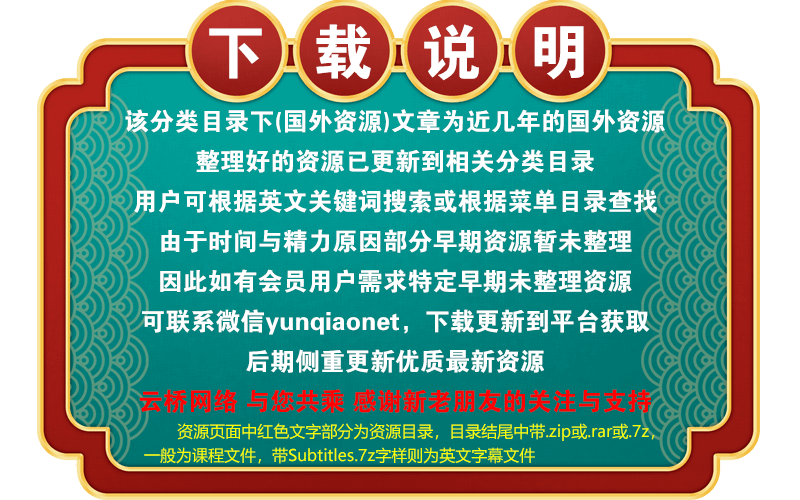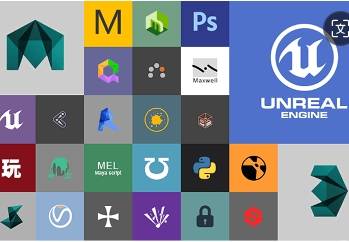Release date:2023, February
Duration:04 h 53 m
Author:Jeronimo Maggi
Skill level:Beginner
Language:English
Exercise files:Yes
This course focuses on the development of Digital Assets, which are central to the everyday use of Houdini. Whether you have created your own HDAs or downloaded ones made by others, the aim of the course is to help you understand what makes a good HDA and how to apply these concepts to create more robust assets. Building on the foundation established in HOU140 – Houdini FX Tool Building Foundation, this intermediate course assumes basic knowledge of Houdini and how HDAs work.
The course centers around a realistic production scenario of creating a Digital Asset for generating roof tiles on various buildings. In the initial classes, you will learn how to create a user-friendly interface and various techniques for making HDAs more accessible. Subsequent classes will cover ways to enhance the performance and iteration times of the HDA, best practices for organizing its internals, validating input attributes, and performing error checks, as well as documenting and debugging.
Towards the end of the course, you will learn about updating HDAs and two new techniques for automating tests that check the integrity of the asset by performing geometry and render comparisons in Python. The final classes will also cover some useful Python tips and tricks that can be applied to HDAs, culminating in the completion of the roof tile generator project. Upon completion, you will have learned various techniques to create better, more reliable, and more user-friendly HDAs.
The course instructor, Jeronimo Maggi, is an FX TD with eight years of experience working with Houdini on feature films. He has taught Houdini in the education field and currently works at Walt Disney Animation Studios as a General TD.
Class Ouline:Class 1: What makes a good HDA? In this class, the project example of generating roof tiles will be introduced, and the process of turning it into a Digital Asset will be explained. The focus will be on understanding the principles that make a good HDA and learning how to approach the HDA creation process.
Class 2: The User Interface The second class will cover the new dialog for creating HDAs in Houdini 19.5, and how to leverage namespaces and versions effectively. The focus will then shift to converting the roof tiles setup into a Digital Asset, while applying the concepts learned in the previous class. The main emphasis will be on creating a user-friendly interface by promoting parameters, and best practices to keep it organized and easy to use.
Class 3: Organizing the Internals, Part 1 This class will cover best practices for organizing HDAs, such as using internal attributes to avoid clashing with existing ones, being explicit about output attributes, and maintaining existing attributes and topology. These concepts will be applied while creating a new utility HDA for deleting primitives based on their area or perimeter.
Class 4: Organizing the Internals, Part 2 Continuing from the previous class, this lesson will explore explicitly reading input attributes and adding other small details to make HDAs even more user-friendly. The focus will then shift to improving HDA performance using the performance monitor, and techniques to allow for faster iteration.
Class 5: Node Tab and Error Checks This class will cover using guide geometry, message nodes, and descriptive parameters of the Node tab of the HDA. Validating input data is a crucial step in creating a Digital Asset, and the lesson will go over a technique to validate input data and how to report errors in a more user-friendly way.
Class 6: Debugging and Documentation This class will emphasize the importance of documentation and cover best practices for documenting HDAs using Houdini’s Wiki Markup, organizing nodes using sticky notes and node comments, and commenting VEX and Python code. The lesson will also cover creating visualizers for future debugging.
Class 7: Updating and maintaining In this class, best practices for updating HDAs will be discussed, such as versioning HDAs and dealing with adding and removing new features and parameters. The roof tile Digital Asset will be updated to be more flexible and include new features.
Class 8: Testing This lesson will cover the importance of testing HDAs and how to create and automate tests using different techniques, such as comparing renders and geometry in Python.
Class 9: Scripting This class will cover Python use cases for HDAs, such as menu scripts, event callbacks, and caching. Examples of event callbacks, creating custom menu scripts, and caching menu data to improve performance will be explored. Finally, creating a custom tab menu tool that can create multiple nodes will be discussed.
Class 10: Project finalization The final class will cover finalizing the project and using the HDA created in all the previous lessons to generate the tiles for the final render. The lesson will also cover shading and rendering the project.
hou223-class01 hou223-class02 hou223-class03 hou223-class04 hou223-class05 hou223-class06 hou223-class07 hou223-class08 hou223-class09 hou223-class10 [FXPHD] HOU223 – Taking Houdini Digital Assets to the Next Level by Jeronimo Maggi.7z.rar [FXPHD] HOU223 – Taking Houdini Digital Assets to the Next Level by Jeronimo Maggi_Subtitles.7z
 Channel and
Channel and  Group
Group
1、登录后,打赏30元成为VIP会员,全站资源免费获取!
2、资源默认为百度网盘链接,请用浏览器打开输入提取码不要有多余空格,如无法获取 请联系微信 yunqiaonet 补发。
3、分卷压缩包资源 需全部下载后解压第一个压缩包即可,下载过程不要强制中断 建议用winrar解压或360解压缩软件解压!
4、云桥网络平台所发布资源仅供用户自学自用,用户需以学习为目的,按需下载,严禁批量采集搬运共享资源等行为,望知悉!!!
5、云桥网络-CG数字艺术学习与资源分享平台,感谢您的赞赏与支持!平台所收取打赏费用仅作为平台服务器租赁及人员维护资金 费用不为素材本身费用,望理解知悉!



评论(0)